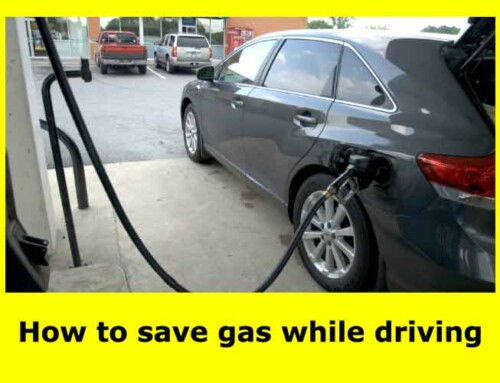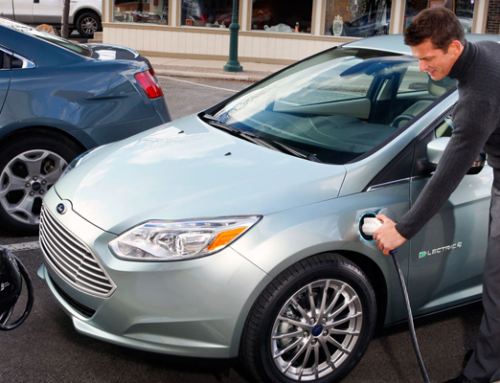Winter is coming. And with the cold weather comes a myriad of hazards for your car. If you want to make sure that your vehicle can withstand the harsh winter, then it’s time to winterize it. There are many steps involved in this process, but don’t worry; we’ve got you covered. This blog post will tell you everything about what you need to do before winter rolls around so that your car will be safe and ready for whatever mother nature throws its way.
1. Put Together a Winter Emergency Kit
One of the most important things you can do to make sure your car stays safe during winter is buy a winter emergency kit. Many people skip this step because they think it’s unnecessary, but many others have learned the hard way that some weather conditions can’t be dealt with without one.
These kits often consist of items like a flashlight, jumper cables in case you need to give your battery a boost, an ice scraper for removing snow and ice from your car, flares or hazard lights in case you get stuck on the road during a blizzard, winter gloves so that you can grip objects when it’s freezing outside, extra kitty litter or sand for your tires in case they get stuck, a snow shovel so that you can dig your car out of the snow. This kit might seem frivolous at first glance, but it can save you from being stranded on the road when you need to call for help.
2. Check Your Battery
So what happens if your car battery die? As you may have learnt in the driving school, dead battery is one of the most common reasons your car won’t start in the winter. It’s almost inevitable that you’re going to forget to check it at some point, so what can you do if your battery does go out on you?
First of all, don’t freak out – this happens to a lot of people. Secondly, you should have some jumper cables on hand so that you can give your battery a jump start and get going again.
If you are a new driver, just follow the instructions of whoever is giving you a boost on how to connect the two batteries. Once the first car’s battery is on, try turning on your ignition first before starting up the other car. This whole process shouldn’t take more than a few minutes. If you don’t have jumper cables, try asking your neighbors or another person driving by to help you out. The chances are that they will know how to do this as well.
3. Check the Tires
Another common reason for not being able to start your car is a flat tire. Many people don’t realize this, but winter can be rough on your tires. Cold temperatures and snow cause the air inside your tires to contract, making them go flattered than usual. If you have a slow leak in one of your tires, then it’s going to get worse as time goes on until you finally need to change your tire.
You can tell if you have a slow leak by taking out the pressure gauge that is usually located inside your driver’s side door and checking it every other week. If there are any noticeable changes in the PSI levels, then chances are you need to get your car in for an inspection.
4. Check Your Windshield Wipers
Winter is brutal when it comes to snow. And, of course, you need your windshield wipers to see through the snow. If your windshield wipers aren’t working properly, then you will have a hard time seeing them while driving across a highway. At arrow driving school, you will learn to tell if they need to be replaced by going up to them and closely looking at the rubber. If the rubber is cracked or looks old, it’s probably time to change them.
5. Check Your Antifreeze Levels
This step isn’t one that people usually think about, but it can be important. You should check your antifreeze levels at least once a month because your car’s heat can cause it to evaporate, which will require you to top off the tank. If you are a student driver, you should be know that antifreeze levels need to be checked more frequently in winter so that you don’t have any engine problems. If there is no antifreeze left in your tank, then your engine could freeze.
6. Check the Fluid Levels for Your Brakes and Windshield Wipers
Flushing out your car’s brake fluid and windshield wiper fluid is also important. Remember, if you don’t do this, then all of the salt on the roads will corrode your car’s components even more! Make sure that you check them at least every couple of months.
7. Check the Fan Belt
Finally, you should check your car’s fan belt if it is winter outside. Many people don’t realize that car belts are affected by the cold weather as well, which can cause them to crack or snap during this time of year. If you’re not sure how to check for this, you can ask someone who works on cars to show you.
What do car fan belts do? While your car’s engine will run without a belt, it won’t work properly without one. A fan belt provides power to some of your engine’s components so that they can run efficiently. For example, the belt sends power to your car’s alternator and power steering pump.
If the belt snaps or breaks, then you will need to get it replaced as soon as possible – otherwise, your car could lose some of its components completely! Just take the car into a shop, and they should be able to help you out.
Conclusion
By following these seven tips, you will figure out why your car won’t start in the winter. If all else fails, then it is time to consider bringing your car into a professional. No matter what happens, though, make sure you are always prepared for the winter months. Do you need any help? Feel free to contact us now.
If you want to learn Driving, check our Alberta Registry Approved courses.






